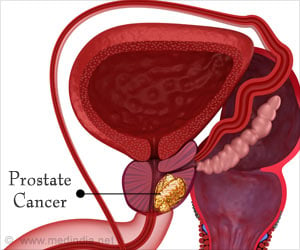An easy to use, low-cost 'NLISA' platform for detecting biological signatures that could shake up the way to monitor the health.

‘Nanoswitch technology is affordable and easy to use as at-home pregnancy tests, but are much more sensitive and accurate. Nanoswitch-linked immunosorbent assay has the potential to become a standard for protein detection
’





That’s why Wong and his team have adapted their DNA nanoswitch technology -- previously demonstrated to aid drug discovery and the measure of biochemical interactions into a new platform that they call the nanoswitch-linked immunosorbent assay (NLISA) for fast, sensitive and specific protein detection, which they reported this week in a new paper in Proceedings of the National Academy of Sciences."It’s a ’best of both worlds’ approach," says Wong, senior author on the paper, who is a principal investigator in the Boston Children’s Hospital Program in Cellular and Molecular Medicine, an assistant professor at Harvard Medical School and an associate faculty member at the Wyss Institute for Biologically Inspired Engineering at Harvard University.
"This technology could translate into laboratory and point-of-care tests that are as affordable and easy to use as at-home pregnancy tests, but are much more sensitive and accurate."
The NLISA platform uses a process call gel electrophoresis to screen synthesized, single strands of DNA "reagents" that change their shape in the presence of a specific biomarker. They begin as long, linear strands of DNA, but are decorated with proteins that bind to a matching protein biomarker of interest.
Once exposed to that matching biomarker, the proteins bind to it and cause the strand of DNA to bend into a loop.
Advertisement
In gel electrophoresis, an electric field pulls molecules through a porous gel. Linear DNA nanoswitches move much faster through the pores in the gel, while triggered nanoswitch loops move much slower because of their clunkier shape.
Advertisement
’Run the gel’
Take, for example, prostate-specific antigen (PSA), which is a blood serum marker used to test men for prostate cancer. To demonstrate their NLISA system, Wong and his team spiked blood serum samples with varied levels of PSA.
Then, combining the nanoswitch reagents for PSA with the serum samples, they performed gel electrophoresis on the mixture. The team was able to detect the presence of PSA with higher sensitivity in less volume than with comparable assays.
In addition, during another proof-of-concept demonstration, Wong’s team showed that their NLISA platform could distinguish between highly-similar viral strains of Dengue fever in 45 minutes or less.
"By running a gel, we perturb the nanoswitches with an electric field to reduce false positive results using a process called ’kinetic proofreading,’" Wong explains. "Although similar proteins such as related viral strains might initially ’trip’ the nanoswitches into loops, these close-but-not-quite-perfect bonds can be broken, leaving behind only true positive results. This allows us to discern between viral strains that may even be different by just a single gene mutation."
The NLISA system has the potential to become a standard for protein detection, Wong suggests, and could even be developed into a portable, handheld device for clinical use.
Source-Eurekalert










